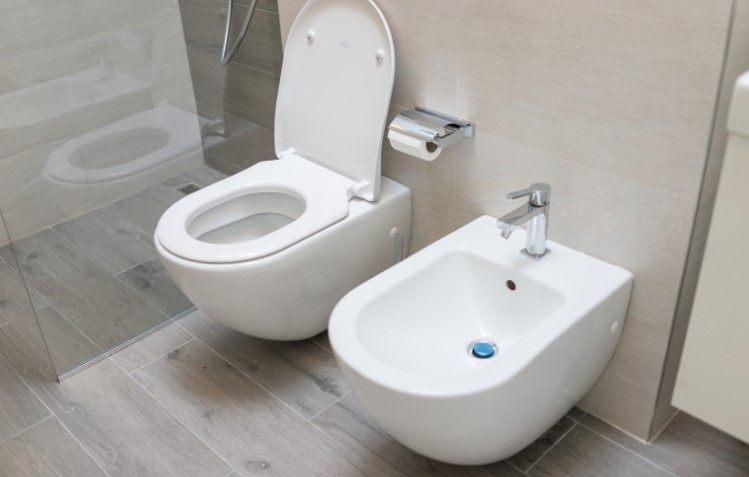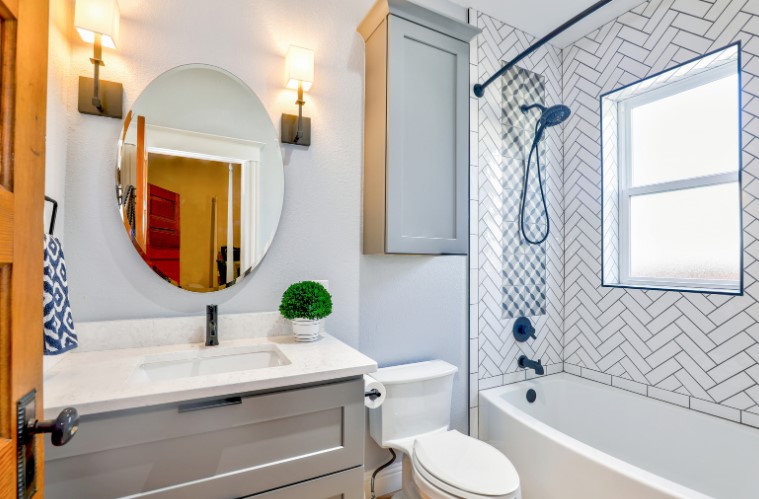Brown stains in the toilet bowl are not only unsightly but can also be a source of embarrassment when you have guests. These stains are common, especially in areas with hard water or older plumbing, and if left untreated, they can become stubborn and difficult to remove. In this guide, I’ll walk you through the most effective methods on how to remove brown stains from toilet bowl, ensuring it remains clean and fresh.
What Causes Brown Stains in the Toilet Bowl?
Mineral Deposits and Hard Water
Brown stains are often the result of hard water, which is water that contains high levels of minerals like calcium, magnesium, and iron. When this water sits in your toilet bowl, the minerals can accumulate over time, leading to the formation of brown or rust-colored stains. The iron in particular is a major culprit, as it oxidizes and leaves those unsightly marks on the porcelain.
Bacterial Growth
Another common cause of brown stains in the toilet bowl is bacterial growth. Certain bacteria thrive in the moist environment of the toilet bowl and, combined with the minerals in hard water, can produce a reddish-brown discoloration. This type of stain is often seen around the waterline or in the areas where water is constantly present.
Rust and Corrosion
Older plumbing systems or rusty pipes can contribute to brown stains as well. Rust from corroded pipes can make its way into the toilet bowl, especially if the pipes haven’t been replaced in many years. This rust not only stains the bowl but can also cause permanent damage if not addressed promptly.

Tools and Materials You’ll Need
Basic Cleaning Supplies
To effectively remove brown stains from your toilet bowl, you’ll need a few essential tools:
- Toilet brush: A sturdy brush with firm bristles for scrubbing.
- Pumice stone: Ideal for removing tough stains without scratching the porcelain.
- Microfiber cloths: For wiping down and polishing the bowl after cleaning.
Effective Cleaning Agents
Different cleaning agents can be used depending on the severity of the stains:
- Vinegar: A natural acid effective in dissolving stubborn mineral deposits.
- Baking soda: Works well in combination with vinegar to create a foaming action that lifts stains.
- Citric acid: Another natural cleaner that’s effective for dissolving rust and hard water stains.
- Commercial rust and stain removers: Specifically designed for tough toilet stains, these products are widely available in the UK.
Step-by-Step Guide to Removing Brown Stains from Your Toilet Bowl
Step 1 – Preparing the Toilet
Start by lowering the water level in your toilet bowl. You can do this by turning off the water supply and flushing the toilet to drain most of the water. If necessary, use a cup to scoop out any remaining water to ensure the stains are fully exposed and ready for cleaning.
Step 2 – Applying the Cleaning Solution
Choose your preferred cleaning solution based on what you have on hand and the severity of the stains. For natural cleaners, pour a generous amount of vinegar into the toilet bowl, ensuring it covers the stained areas. If you’re using baking soda, sprinkle it over the stains after adding the vinegar. For tougher stains, a commercial cleaner might be necessary—follow the manufacturer’s instructions for application.
Step 3 – Scrubbing the Stains
After letting the cleaning solution sit for a few minutes, you can begin scrubbing away the stains. Use a toilet brush for general cleaning, but for particularly stubborn stains, a pumice stone works wonders Be gentle yet firm, applying just enough pressure to lift the stains without damaging the porcelain surface. Concentrate on the areas around the waterline, as this is where brown stains are typically most prevalent.
Step 4 – Letting the Solution Sit
For maximum effectiveness, let the cleaning solution sit for at least 15 to 30 minutes, depending on the severity of the stains. This waiting period gives the acids in the vinegar or commercial cleaner time to dissolve the mineral deposits, making them easier to scrub away.
Step 5 – Flushing and Final Touches
Once you’ve thoroughly scrubbed the bowl, turn the water supply back on and flush the toilet to rinse away the cleaning solution and any loosened stains. If any stains remain, repeat the process as necessary. After flushing, use a microfiber cloth to wipe down the toilet bowl, removing any leftover residue and giving the porcelain a polished finish.

Alternative Methods for Stubborn Brown Stains
Using Citric Acid
Citric acid is another effective natural cleaner, especially for rust and mineral stains. You can purchase citric acid in powder form and mix it with water to create a paste. Apply the paste to the stains and let it sit for about 30 minutes before scrubbing with a toilet brush. This method is particularly effective for those tough stains that don’t respond to vinegar and baking soda.
Commercial Stain Removers
For particularly stubborn brown stains, commercial rust and stain removers are your best bet. These products are formulated to dissolve tough stains quickly. When using these chemicals, it’s essential to follow the instructions carefully and use protective gear like gloves to avoid skin irritation. Always ensure the bathroom is well-ventilated while using strong cleaners.
Preventing Brown Stains in the Future
Regular Cleaning Routine
Prevention is always better than cure, so adopting a regular cleaning routine is crucial. Clean your toilet bowl at least once a week using a toilet cleaner that’s effective against mineral deposits. Regular cleaning prevents the buildup of minerals and bacteria that cause brown stains, keeping your toilet fresh and clean.
Addressing Water Quality
If you live in an area with hard water, consider addressing the issue at the source. Installing a water softener or a filter can significantly reduce the minerals in your water supply, thereby preventing the formation of brown stains. While these systems involve an initial investment, they can save you time and effort in the long run by reducing the need for frequent and intensive cleaning.
Conclusion
Dealing with brown stains in your toilet bowl doesn’t have to be a frustrating task. By following the steps outlined in this guide on how to remove brown stains from toilet bowl, you can effectively remove these stains and keep your toilet bowl sparkling clean. Regular maintenance and addressing the root cause, such as water quality, will help you prevent these stains from reappearing. With the right tools and techniques, you can maintain a fresh and hygienic bathroom environment.
FAQs About Removing Brown Stains from Toilets
1. Can I use bleach to remove brown stains?
Bleach can help disinfect and whiten the toilet bowl, but it isn’t always effective at removing brown stains caused by mineral deposits. It’s better to use acidic cleaners like vinegar or citric acid, which are more effective at breaking down these stains.
2. Is it safe to use a pumice stone on toilet bowls?
Yes, a pumice stone is safe to use on porcelain as long as you’re gentle and ensure the stone and the area you’re scrubbing are wet. This prevents scratching the surface while effectively removing tough stains.
3. How often should I clean my toilet to prevent stains?
It’s recommended to clean your toilet bowl at least once a week to prevent the buildup of minerals and bacteria that cause brown stains. Regular cleaning is the best way to keep your toilet looking its best.
4. What’s the best natural remedy for brown toilet stains?
Vinegar, often in combination with baking soda, is one of the best natural remedies for removing brown stains. It’s effective, eco-friendly, and safe to use regularly in your cleaning routine.


0 Comments